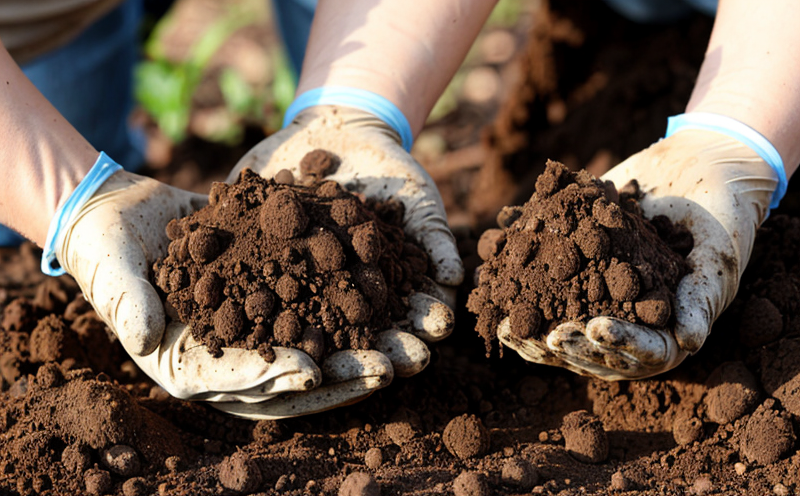ASTM E2720 Biofilm-Forming Microbes Testing in Soils
The ASTM E2720 standard provides a method to determine the biofilm-forming potential of microorganisms present in soil samples. This testing is critical for understanding how microorganisms interact with their environment, which has significant implications across various industries including environmental science, agriculture, and waste management.
Biofilms are complex communities of microbes that adhere to surfaces within a matrix produced by the organisms themselves. These biofilms play crucial roles in nutrient cycling, pollutant degradation, and soil health. The ASTM E2720 method allows for the quantification of these interactions through a standardized process.
The testing involves several key steps: sample collection from the field, preparation in the laboratory, inoculation with specific nutrients or substrates, incubation to allow biofilm formation, and finally, microscopic examination to count and identify the biofilm-forming microbes. This method is particularly useful for assessing environmental impact assessments (EIA) and compliance with regulatory standards.
One of the primary challenges in this testing lies in accurately capturing the diverse microbial communities present in soil samples. The use of selective media can help isolate specific types of biofilm-forming organisms, but it also introduces variability that must be carefully accounted for in the results.
The ASTM E2720 method is widely recognized and used globally due to its precision and repeatability. Compliance with this standard ensures that tests are conducted under controlled conditions, providing consistent and reliable data across different laboratories. This consistency is essential for regulatory bodies and clients alike who rely on accurate microbial activity assessments.
The application of ASTM E2720 extends beyond just soil samples; it can also be applied to other matrices such as water or sediment. The versatility of this method makes it an invaluable tool in environmental research, where understanding the behavior of microorganisms is paramount.
For industries involved in contaminated site remediation, the results from ASTM E2720 testing provide insights into the effectiveness of bioremediation strategies. By monitoring biofilm formation and microbial activity over time, practitioners can refine their approaches to ensure optimal pollutant degradation rates.
| Step | Description |
|---|---|
| Field Sampling | Carefully collect soil samples from the site of interest, ensuring representative sampling. |
| Transportation and Storage | Avoid exposing samples to extremes in temperature or humidity; maintain them at appropriate conditions until analysis. |
The testing process is highly technical, requiring specialized equipment such as incubators capable of maintaining specific environmental conditions (temperature, humidity). Microscopy techniques are also essential for visualizing and counting biofilm-forming microbes accurately. Proper training in these methods ensures consistent results.
Benefits
- Comprehensive understanding of microbial activity within soil systems
- Assessment of bioremediation effectiveness through biofilm formation monitoring
- Informed decision-making in environmental impact assessments (EIA)
- Regulatory compliance and confidence for stakeholders involved in contaminated site management
Competitive Advantage and Market Impact
By providing accurate, standardized testing results, laboratories adhering to ASTM E2720 can offer a competitive edge by ensuring high-quality data that meets stringent regulatory requirements. This capability enhances client trust and satisfaction, fostering long-term relationships.
- Pioneering in biofilm research with reliable data
- Facilitating advancements in environmental science through detailed microbial activity insights
- Aiding in the development of more effective bioremediation technologies
Use Cases and Application Examples
| Scenario | Description |
|---|---|
| Contaminated Site Remediation | Evaluating the effectiveness of bioremediation strategies by monitoring biofilm formation over time. |
| Agricultural Soil Health Monitoring | Determining the presence and activity levels of beneficial microorganisms in agricultural soils. |





